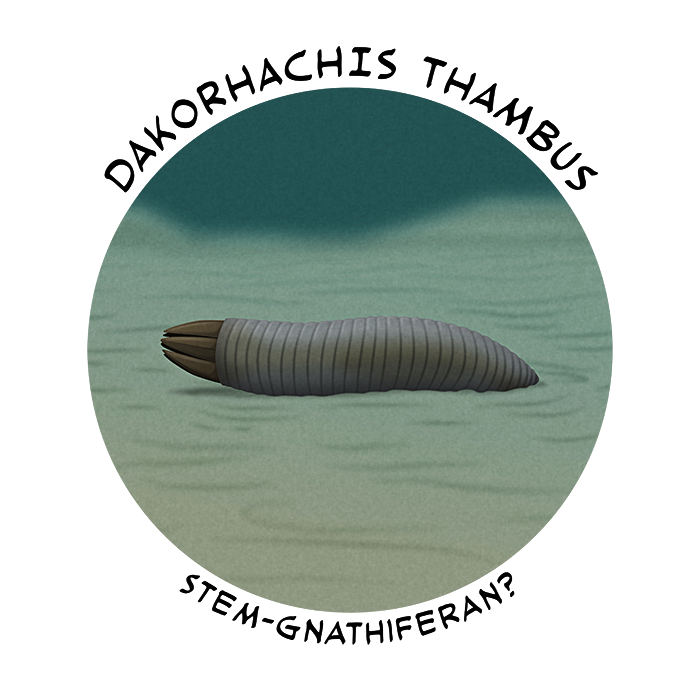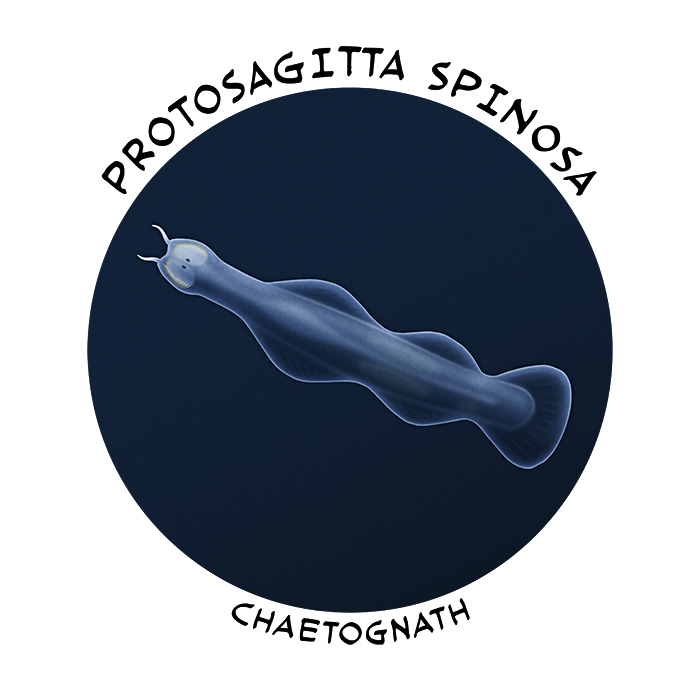Chaetognaths, commonly known as arrow worms, are a major component of marine planktonic ecosystems all around the world. They’re a fairly small phylum in terms of diversity, with only about 120 known modern species, but in sheer numbers of individuals they’re incredibly abundant – making up as much as 15% of total zooplankton biomass worldwide. They play an important role as predators, feeding on things like copepods, fish larvae, and each other, and can be so voracious that they’re sometimes nicknamed “tigers of the zooplankton”.
And they’ve been doing it for a very long time.
The appearance of protoconodont “teeth” at the start of the Cambrian (~541 million years ago) suggests that arrow-worm-like gnathiferans were some of the first active swimming planktonic predators – taking advantage of ecosystems that were becoming increasingly complex around that time, and laying the early foundations for more modern-style marine food chains.
Unfortunately we don’t know much about their evolutionary origins, with their small fragile soft bodies leaving only a very patchy fossil record. Their relationship to other animals was also rather enigmatic for a long time, and they were only very recently identified as being part of the gnathiferans.
But their ancestors may have been something like Dakorhachis thambus.

Known from the Weeks Formation in Utah, USA (~499 million years ago), this little worm-like animal was up to about 3cm long (1.2″). It had a segmented body and a prominent feeding apparatus made up of a ring of at least six large triangular teeth, with various smaller elements located further inside its mouth.
It had no swimming appendages and would have lived either on the seafloor or hidden just below the surface, and it may have been an antlion-like ambush predator lunging at smaller prey and trapping it in its “basket” of teeth. It also seems to have been a fairly common element of the Weeks Formation ecosystem, with multiple individuals sometimes preserved on the same slab.
It’s so unlike any other known fossil species – a Cambrian “weird wonder” – that it’s not clear exactly what it was. But it’s been tentatively linked to the gnathiferans and arrow worms due to its complex hard mouthparts, so it might represent a stem lineage retaining a more ancestral jaw arrangement and lifestyle.

One of the earliest definite arrow worm fossils is Protosagitta spinosa from the Chinese Chengjiang fossil deposits (~518 million years ago). About 3.5cm long (1.4″), it looked similar to modern arrow worms, and had at least three sets of teeth in its jaws and a pair of small tentacles on its head.
Another arrow worm species from the same deposits, Ankalodous sericus, had a “multi-jawed” arrangement of multiple bundles of long spines, which may represent a transitional stage between a Dakorhachis-like ancestor and more modern arrow worms.
There was also the relatively “giant” Capinatator praetermissus from the younger Canadian Burgess Shale fossil deposits (~508 million years ago), which had another unique jaw arrangement with up to 50 spines.
